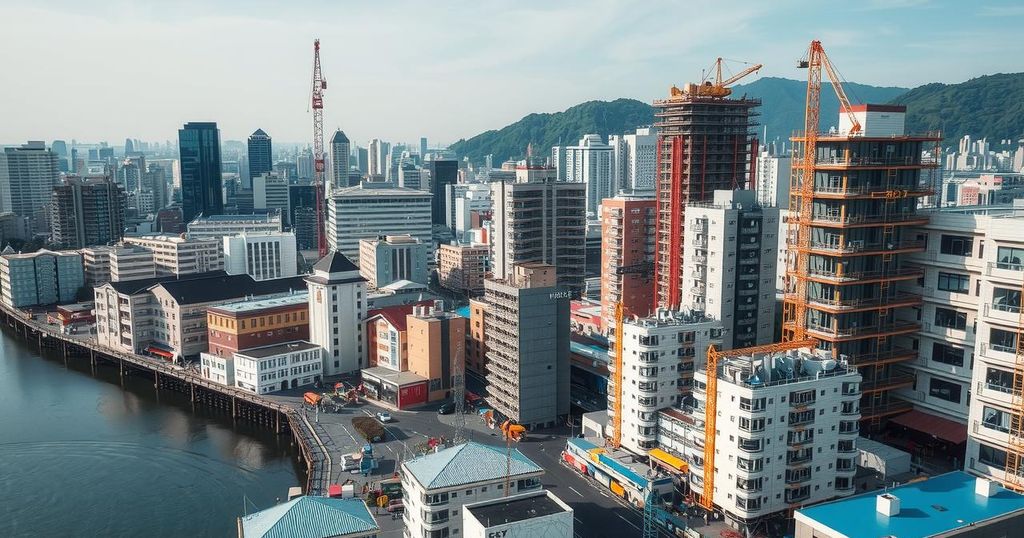Wajima’s Uncertain Future: A Year After the Devastating Earthquake
Wajima faces a challenging New Year following last year’s earthquake that killed nearly 470 people and left many residents in temporary housing. Slow reconstruction efforts compounded by fears of aftershocks and an aging demographic create uncertainties for the community. Emotional distress, family separations, and a declining population further underscore the region’s vulnerabilities after repeated disasters.
In the wake of the devastating earthquake on January 1 of the previous year, Wajima is grappling with the aftermath as residents like 83-year-old Sueko Naka face substantial uncertainty about their futures. Once comforted by traditions at her ancestral altar, Naka now resides in temporary housing with her husband, reflecting on the precariousness of life since the 7.5 magnitude quake claimed nearly 470 lives. As ongoing aftershocks and harsh weather contribute to stress, many survivors are still housed in community shelters, while reconstruction efforts remain painfully slow.
This earthquake, the deadliest in Japan in over a decade, not only resulted in significant loss of life but also devastated property across Ishikawa Prefecture. The destruction of iconic locations, such as Wajima’s historic market, and the havoc wrought by subsequent severe flooding in September forced residents to reassess their living situations. Strong tremors have led to fears of further quakes, hindering recovery efforts and emphasizing the fragility of local infrastructure.
Officials note that despite governmental support post-disaster, efforts to rebuild are hindered by inadequate progress in demolishing severely damaged buildings and clearing debris. This slow pace, compounded by the aging population in the Noto Peninsula, raises concerns about the future viability of its communities as more residents opt to relocate in search of stability and safety.
As families like Naka’s are separated, the emotional toll continues to mount, with lingering questions of safety and community identity permeating the New Year festivities. The once-cherished time of family togetherness now invokes trepidation rather than joy, as members contemplate the prospects of returning to their homes amidst a landscape fraught with destruction.
While some locals remain hopeful about the potential uplifting of their community, the realities of natural disasters combined with socio-economic challenges spotlight a future that may lead to an existential crisis for towns like Wajima.
Following the catastrophic earthquake in Wajima on January 1st, which resulted in approximately 470 fatalities, the Noto Peninsula is facing a grave reconstruction challenge. The earthquake triggered widespread destruction, including significant property damage, loss of life, and strain on services to the elderly population. Thousands remain displaced in temporary accommodations while recovery initiatives progress slowly. The ongoing threat of aftershocks adds an unsettling anxiety to the rebuilding process as residents navigate their difficult new realities.
The earthquake and subsequent disasters have transformed life in Wajima, highlighting the struggle of residents to rebuild their lives amidst ongoing uncertainties. As the community confronts the harsh realities of loss, displacement, and the specter of future disasters, it faces critical decisions on how to move forward. The resilience of the residents and their communal efforts may play a crucial role in determining the future of Wajima and its ability to rejuvenate and retain its population.
Original Source: www.taipeitimes.com




Post Comment